Embraer today presented Energia, a family of renewable and alternative energy propulsion aircraft, exploring net-zero carbon emissions.
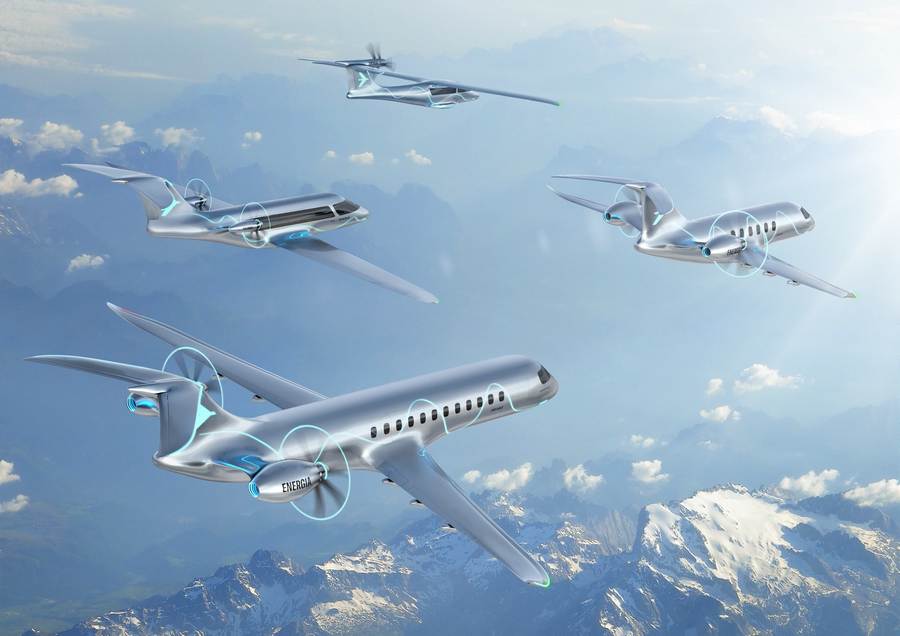
Embraer announced partnerships with universities and research institutes, searching for the best way forward with net-zero carbon emissions. As we have seen, there are different views and ideas for tackling the issue. Some ideas, like battery-electric, will likely only work with aircraft that have small passenger capacities. Other concepts are more scalable.
So, Embraer is launching four concepts, all of them part of the Energia family. Their methods of propulsion include hybrid-electric, all/battery-electric, hydrogen-electric and hydrogen/SAF combustion. Aircraft size goes up and entry to service is further to the future, with each method, in that order.
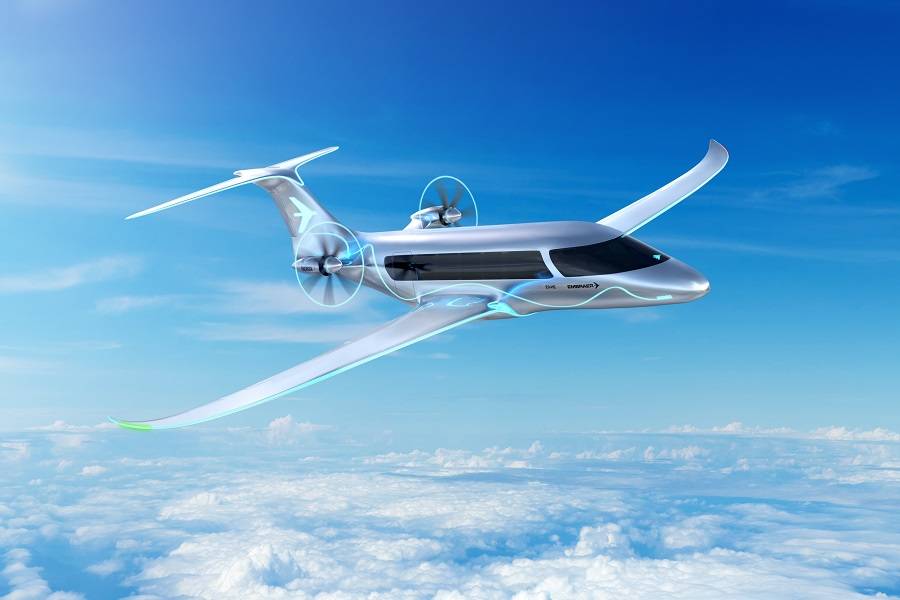
The Four Embraer Energia Concepts
So first up is the Embraer Energia Hybrid, called E9-HE (hybrid-electric) seen above. This will be a nine-seat aircraft, with two rear-mounted engines. Embraer expects that it will achieve a 90% reduction of CO2 emissions, and could be ready in 2030.
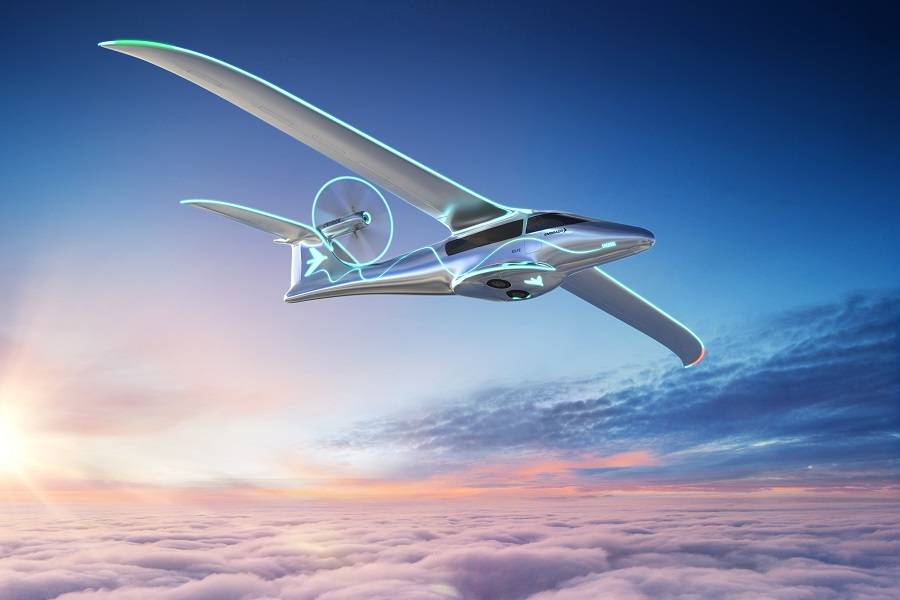
Next in line is the Energia Electric, i.e. E9-FE (full-electric). This will also have nine seats, and rear-mounted engines, with two in-line contra-rotating propellers. However, this technology will need more development time, being ripe for service in 2035. But of course, it is a zero CO2-emission design.
We then go up in size, but still stay below typical regional airliner sizes, with 19 seats. This is the Embraer Energia H2 Fuel Cell, or E19-H2FC, below. The description doesn’t specify if the manufacturer plans to use pressurized or cryogenic hydrogen. However, Embraer is aiming to have a hydrogen fuel cell demonstrator ready by 2025. The E19-H2FC itself will achieve “technology readiness” in 2035.
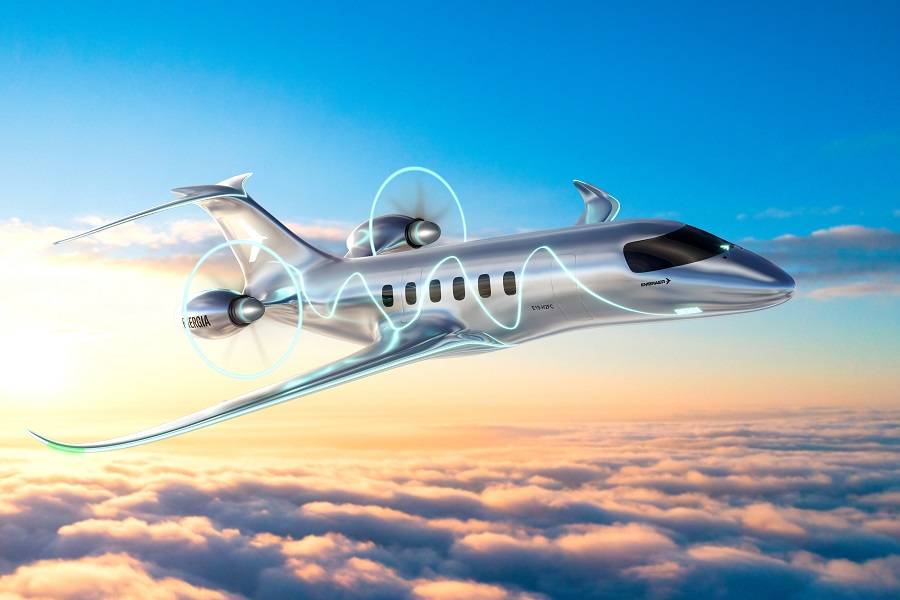
And finally, the biggest Embraer concept in this series is the Energia H2 Gas Turbine (E50-H2GT), below. This will need the longest to develop, not coming before 2040. It will have 35 to 50 seats, using the same rear-mounted engine setup. And it will offer some backwards compatibility, perhaps for parts of the world where hydrogen or all-electric operation isn’t practical.
Some Parallel Development?
This bigger Embraer Energia concept will have gas turbine engines, that can run both on hydrogen and JetA/A1. Or, it could run on sustainable aviation fuels (SAF). Interestingly, and despite being the design that’s furthest into the future, this model is closest to Embraer’s next turboprop. But the latter will be even larger, and use conventional materials, including the fuselage of the current E2 series.
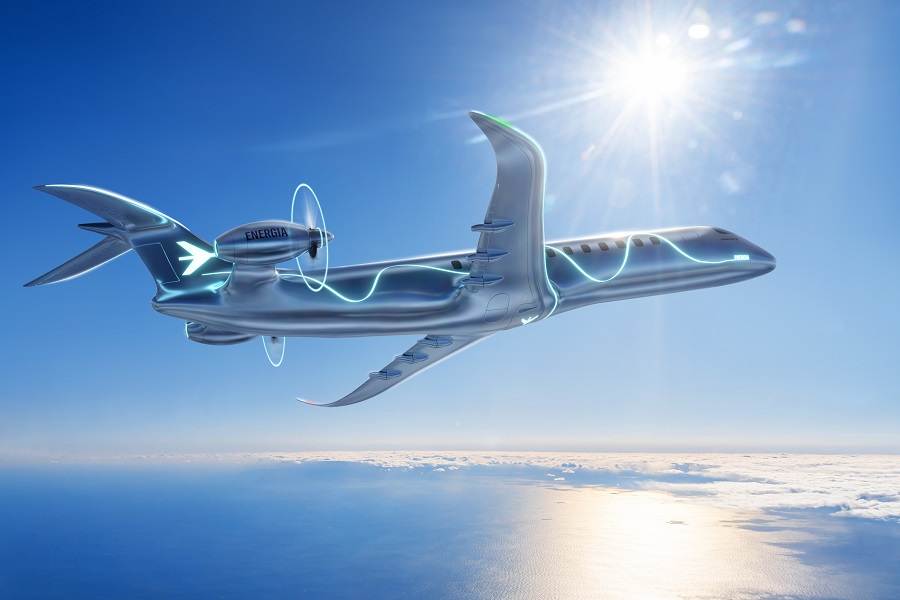
Embraer has faced some difficult times financially in the last few years. But its outlook at the moment is more optimistic than it was just before the pandemic. Just days ago, the company forecast a positive annual cash flow. And that’s a big deal, because the last time Embraer was in this position, was in 2017.
So it is interesting to see a reinvigorated Embraer, planning to invest in projects like Energia. The company flew an all-electric testbed aircraft in August, using the airframe of the EMB-203 Ipanema. Embraer is also working on an all-electric eVTOL design, that they plan to put in service in 2026.
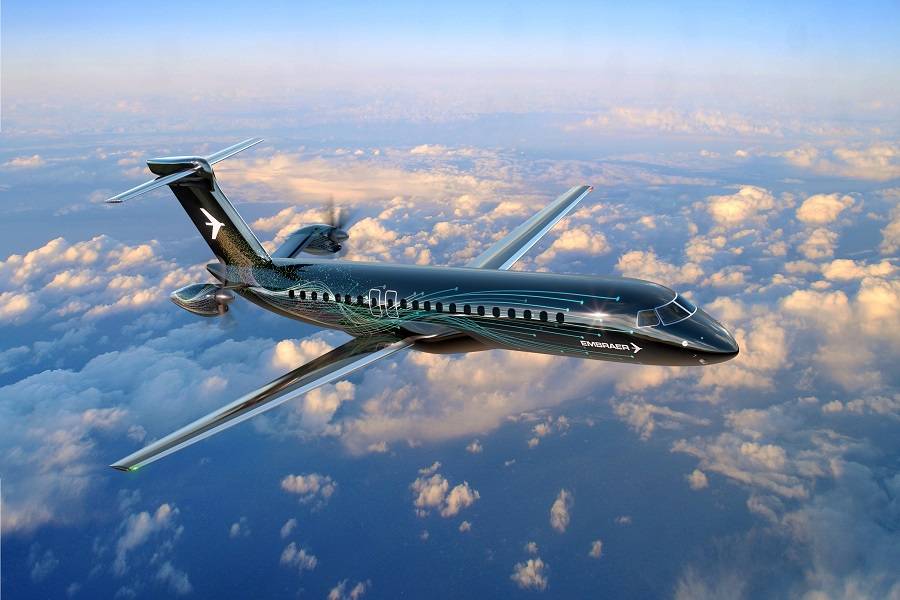
The company doesn’t have the budget of Airbus or Boeing. But even so, Embraer seems keen to show that it is not ignoring alternative energy propulsion aircraft. This was one criticism the company saw when it first made public its plans for its next turboprop. It now seems that this Embraer turboprop and the Energia concepts may benefit from some parallel development.



